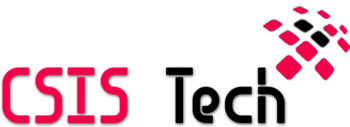Protect your Mac Privacy with these Exemplary Tips


Macs and Malware together- not possible! Well, this is an obsolete idea that Macs are safe from malware. Although claiming macOS as an insecure operating system is also not true because it isn’t. It is like Linux and Windows, which too are prone to user errors.
The tech market has seen a whopping increase of Apple computers and serves. Yet, the threats associated with this increase square the total number of market share since the threat actors are paving their path. Yes, there has been a sophistication in Mac malware threats, and attackers have been using signed digital certificates for facilitating the compromise of a device. Seeing your device prone to Malware and security threats is heart-wrenching and like a nightmare come true isn’t it? So how about collecting and employing some of the best tips that you can use for protecting the privacy of your Mac? Be sure to check these out:
- Keep your Mac and associated software up-to-date:
One of the most important and easiest ways of keeping your Mac safe from Malware is updating it for the operating system updates and app updates. Whenever thinking of downgrading your Mac, the tech experts – https://macpaw.com/how-to/downgrade-macos-big-sur suggest following some steps because your Mac is the most prone to threats during the downgrading process. Some security vulnerabilities patch with system updates, creating new openings for malware exploitation. When installing the system updates, one also tends to update the anti-malware software, which in turn tends to protect it from common malware.
- Install an apt anti-malware software:
Curious to remove malicious programs and viruses from your Mac? Well, look no further than an anti-malware software that works wonders in scanning your Mac for viruses. All you’ve to do is pick a program that interprets malware attacks targeting your Mac. For instance, whenever you download any file from the internet, the software installed on your Mac will scan it and then permit downloading the same. You can also use a firewall for filtering out the external connections that cause threats to your Mac. This will help you save your files from corrupting and falling prey to attached download viruses.
- Install trusted software only:
Can’t resist free Mac applications? Well, I’m sure you can’t but quenching for an application like this opens doors to malware, especially when you click on ads like “Your Adobe Acrobat Software looks out of date”. Yes, if you install updates from untrustworthy websites like these, no anti-malware software would be able to protect your Mac. All you’ve to do is install applications from the Mac App Store or the official website of the software.
- Clean up your Mac:
Another great way of protecting your Mac from threats is cleaning it. This process is valuable since it helps in handling the Cache like junk files, which in turn pose threats to your computer. These spaces occupy gigantic space in your Mac and prove to be weak links that invite hacking threats, penetrating malice used by hackers. Adequately cleaning your Mac is the key to escaping malware, optimizing storage, and also boosts the performance. One such example of dangerous caches is web caching login. This form of cache works in exposing your login details that can be stolen through a web proxy. All you’ve to do is find a suitable cleanup software for cleaning up your cache and escaping from common threats.
Being aware of rogue websites, using secure networks, abstaining from surfing administrator accounts, and securing transmissions are some more tips that should be on your list whenever you embark upon the journey of protecting your Mac. Tech experts recommend striving for your device safety at all times. This is for the avoidance of loss of business and personal information. Since there isn’t a single solution for catering to your diverse needs but a combination of many will help you dwell in tranquility.
.









